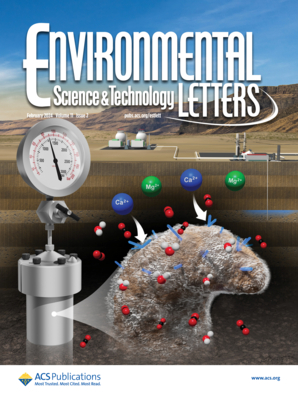不同左心室射血分数表型心力衰竭的长期临床过程
IF 8.9
2区 环境科学与生态学
Q1 ENGINEERING, ENVIRONMENTAL
Environmental Science & Technology Letters Environ.
Pub Date : 2024-10-28
DOI:10.1093/eurheartj/ehae666.872
引用次数: 0
摘要
背景 对不同心力衰竭(HF)表型的心脏特征变化和长期预后,尤其是正常和超正常左室射血分数(LVEF)的研究非常有限。目标 我们的目标是评估慢性心力衰竭患者三年内超声心动图参数和生物标志物的变化,并研究不同左室射血分数表型的长期预后。方法 SUPPORT 试验(平均年龄 66 岁,女性占 25%,平均 LVEF 54%)的患者根据基线 LVEF 被分为四种 HF 表型:降低型(HFrEF [LVEF ≤40%],n=200 [17.6%])、轻度降低型(HFrEF [LVEF ≤40%],n=200 [17.6%])、中度降低型(HFrEF [LVEF ≤40%],n=200 [17.6%])和重度降低型(HFrEF [LVEF ≤40%],n=200 [17.6%])。6%])、轻度减低(HFmrEF [41%≤ LVEF <50%],n=229 [20.1%])、正常(HFnEF [51%≤ LVEF <65%],n=403 [35.4%])和超常(HFsnEF [LVEF ≥65%],n=306 [26.9%])。对基线和三年内有数据的患者的超声心动图参数和生物标志物的变化进行了评估。分析了自基线和三年后心房颤动住院或全因死亡的综合结果(地标分析)。结果 三年内,HFrEF 的全因死亡率为 15%,HFmrEF 为 10.0%,HFnEF 为 5.5%,HFsnEF 为 4.2%。HFrEF患者的左心室舒张末期和收缩末期直径下降最为明显(变化百分比中位数;LVDd -5.8%,LVDs -8.8%)。不同 HF 表型的左心房直径没有变化。N 端前脑钠肽 (NT-proBNP) 在 HFrEF 中下降(-35.7%),但在 HFnEF 和 HFsnEF 中上升(分别为 12.5% 和 18.2%)。除 HFrEF 外,肌钙蛋白在所有组别中均升高。生长分化因子-15(GDF15)在所有 HF 表型中均持续增加(HFrEF 为 18.5%,HFmrEF 为 18.0%,HFnEF 为 16.0%,HFsnEF 为 22.8%)(图 1)。在 8.6 年的中位随访中,与 HFnEF 相比,HFrEF 的综合结局风险更高(调整后 HR 1.40,95% CI [1.08-1.82]),但 HFmrEF 的风险并无差异(1.15,[0.90-1.47])。这一趋势在地标分析中持续存在。与 HFnEF 相比,HFsnEF 三年内的风险没有差异(1.13,[0.70-1.82]),但三年后风险降低(0.73,[0.55-0.95])。事件曲线显示,HFnEF 和 HFsnEF 在三年左右的时间点出现分化(图 2)。结论 在有三年随访数据的慢性心房颤动患者中,左心室尺寸的减小幅度很小,在 HFrEF 中最为明显。除 GDF15 在所有 HF 表型中持续升高外,生物标志物的变化更为多样。三年后,HFnEF 和 HFsnEF 的心房颤动住院或全因死亡风险有所不同。本文章由计算机程序翻译,如有差异,请以英文原文为准。
Long-term clinical course of heart failure across left ventricular ejection fraction phenotypes
Background Studies examining changes in cardiac features and long-term outcomes across heart failure (HF) phenotypes, particularly for normal and supranormal left ventricular ejection fraction (LVEF), are limited. Objectives Our objective was to assess changes in echocardiographic parameters and biomarkers over three years and investigate long-term outcomes across LVEF phenotypes in chronic HF. Methods Patients from the SUPPORT trial (mean age 66 years, 25% female, mean LVEF 54%), a prospective, randomized, open-label blinded endpoint study performed in Japan to determine the additional benefit of olmesartan on top of standard therapy in hypertensive patients with HF, were classified into four HF phenotypes based on baseline LVEF: reduced (HFrEF [LVEF ≤40%], n=200 [17.6%]), mildly reduced (HFmrEF [41% ≤ LVEF <50%], n=229 [20.1%]), normal (HFnEF [51% ≤ LVEF <65%], n=403 [35.4%]), and supranormal (HFsnEF [LVEF ≥65%], n=306 [26.9%]). Changes in echocardiographic parameters and biomarkers were assessed in patients with data available at baseline and three years. The composite outcome of HF hospitalization or all-cause death was analysed from baseline and three years (landmark analysis). Results Over three years, all-cause mortality rates were 15% in HFrEF, 10.0% in HFmrEF, 5.5% in HFnEF, and 4.2% in HFsnEF. The most significant decrease in left ventricular (LV) end-diastolic and -systolic diameter occurred in HFrEF (median percent change; LVDd -5.8% and LVDs -8.8%). Left atrial diameter did not change across HF phenotypes. N-terminal pro-brain natriuretic peptide (NT-proBNP) decreased in HFrEF (-35.7%) but increased in HFnEF and HFsnEF (12.5% and 18.2%, respectively). Troponin increased in all groups except for HFrEF. Growth differentiating factor-15 (GDF15) increased consistently across all HF phenotypes (18.5% in HFrEF, 18.0% in HFmrEF, 16.0% in HFnEF, 22.8% in HFsnEF) (Figure 1). Over a median follow-up of 8.6 years, compared to HFnEF, the risk of the composite outcome was higher in HFrEF (adjusted HR 1.40, 95% CI [1.08-1.82]), but was not different in HFmrEF (1.15, [0.90-1.47]). This trend persisted in the landmark analysis. Up to three years, the risk in HFsnEF compared to HFnEF was not different (1.13, [0.70-1.82]), but it was lower after three years (0.73, [0.55-0.95]). The incident curves show a diverging time point at around three years between HFnEF and HFsnEF (Figure 2). Conclusions In patients with chronic HF and three-year follow-up data, there was minimal decrease in LV dimension, most pronounced in HFrEF. Changes in biomarkers were more diverse, except for consistently elevated GDF15 across all HF phenotypes. The risk of HF hospitalization or all-cause death diverged between HFnEF and HFsnEF after three years.Figure 1Figure 2
求助全文
通过发布文献求助,成功后即可免费获取论文全文。
去求助
来源期刊

Environmental Science & Technology Letters Environ.
ENGINEERING, ENVIRONMENTALENVIRONMENTAL SC-ENVIRONMENTAL SCIENCES
CiteScore
17.90
自引率
3.70%
发文量
163
期刊介绍:
Environmental Science & Technology Letters serves as an international forum for brief communications on experimental or theoretical results of exceptional timeliness in all aspects of environmental science, both pure and applied. Published as soon as accepted, these communications are summarized in monthly issues. Additionally, the journal features short reviews on emerging topics in environmental science and technology.
 求助内容:
求助内容: 应助结果提醒方式:
应助结果提醒方式:


